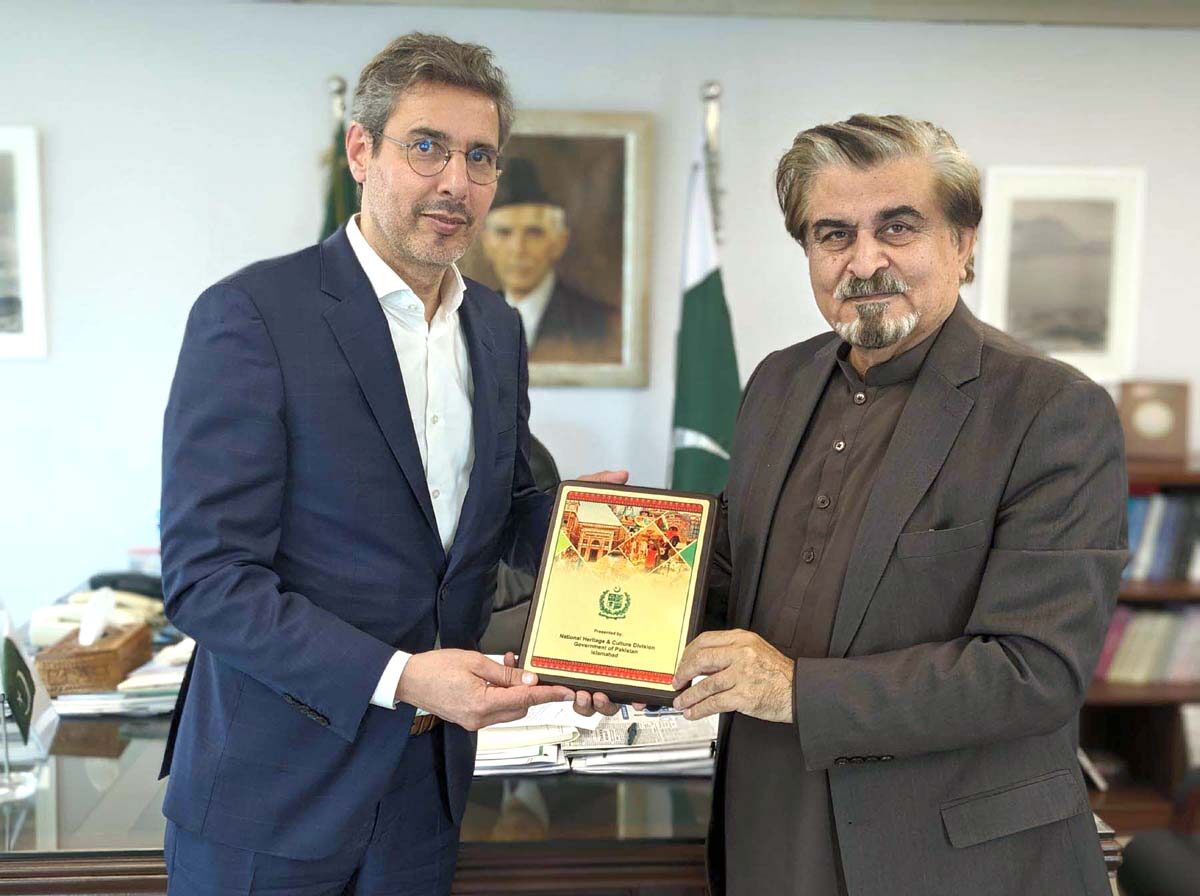ISLAMABAD, Jan 17 (APP):Director and Representative of United Nations Educational Scientific and Cultural Organization (UNESCO) Islamabad, Dr. Youssef Filali-Meknassi, met with Caretaker Federal Minister for National He
ritage and Culture Jamal Shah here at his office.
Secretary National He
ritage and Culture Humaira Ahmed, Adviser National He
ritage and Culture Division Muhammad Kashif Irshad and other senior officials were also present on the occasion.
The Federal Minister an
d UNESCO Director agreed upon the need for policy and procedural changes to improve coordination and information sharing among various governmental departments working on culture and he
ritage, Public Relations Officer Akhter Munir said while talking to APP.
The minister said that National He
ritage and Culture Division has prepared a comprehensive plan for revival of cultural and literary he
ritage.
He informed the Director UNESCO about the strategy for preservation and development of historical sites in federal capital including Mai Qamro Mosque, Muqarab Khan tomb, Rawat Fort and Shah Alla Ditha caves.
Jamal Shah opined that historical sites should be properly documented and conserved, promoting the country’s valuable he
ritage. He said that federal government was taking solid measures for the preservation and development of the national he
ritage.
The minister praise
d UNESCO’s cooperation in preservation of Pakistan’s he
ritage sites, adding that the National He
ritage Division requires technical and financial support to continue its efforts. He added that preservation of historic sites like the Mehrgarh Archaeological Site is an urgent need to uplift the country’s potential, and attract tourists.
In the meeting, UNESCO Director and Representative Dr Youssef Filali-Meknassi reaffirme
d UNESCO’s commitm
ent to work with NHCD on areas of mutual interest.
He appreciated the Division’s ongoing efforts to incorporate cultural content in classrooms for children in schools.
He discussed the development of informational content on culture for children and possible avenues of dis
semination, including television, radio, and web-based sources.
